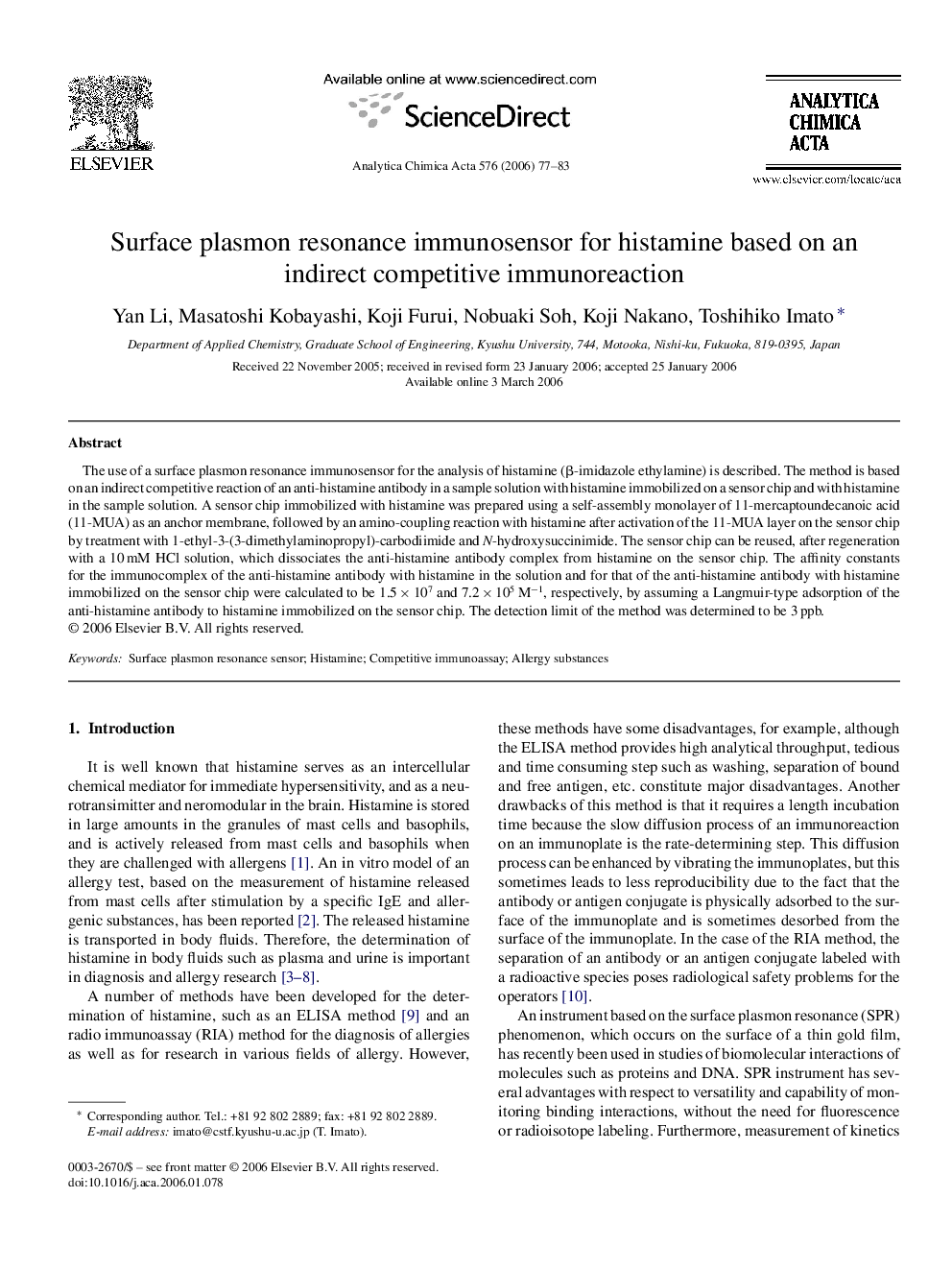| Article ID | Journal | Published Year | Pages | File Type |
|---|---|---|---|---|
| 1171433 | Analytica Chimica Acta | 2006 | 7 Pages |
The use of a surface plasmon resonance immunosensor for the analysis of histamine (β-imidazole ethylamine) is described. The method is based on an indirect competitive reaction of an anti-histamine antibody in a sample solution with histamine immobilized on a sensor chip and with histamine in the sample solution. A sensor chip immobilized with histamine was prepared using a self-assembly monolayer of 11-mercaptoundecanoic acid (11-MUA) as an anchor membrane, followed by an amino-coupling reaction with histamine after activation of the 11-MUA layer on the sensor chip by treatment with 1-ethyl-3-(3-dimethylaminopropyl)-carbodiimide and N-hydroxysuccinimide. The sensor chip can be reused, after regeneration with a 10 mM HCl solution, which dissociates the anti-histamine antibody complex from histamine on the sensor chip. The affinity constants for the immunocomplex of the anti-histamine antibody with histamine in the solution and for that of the anti-histamine antibody with histamine immobilized on the sensor chip were calculated to be 1.5 × 107 and 7.2 × 105 M−1, respectively, by assuming a Langmuir-type adsorption of the anti-histamine antibody to histamine immobilized on the sensor chip. The detection limit of the method was determined to be 3 ppb.
